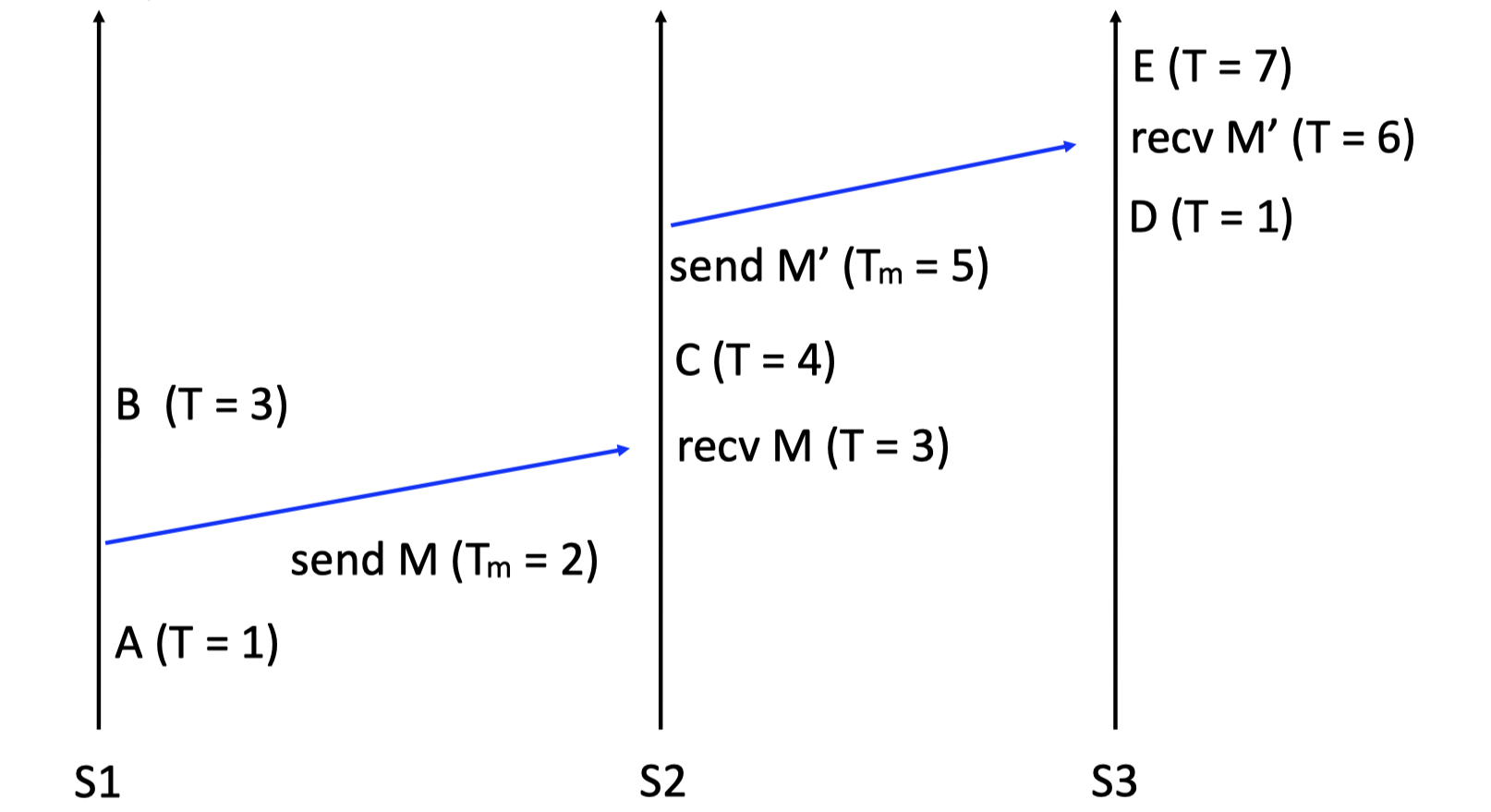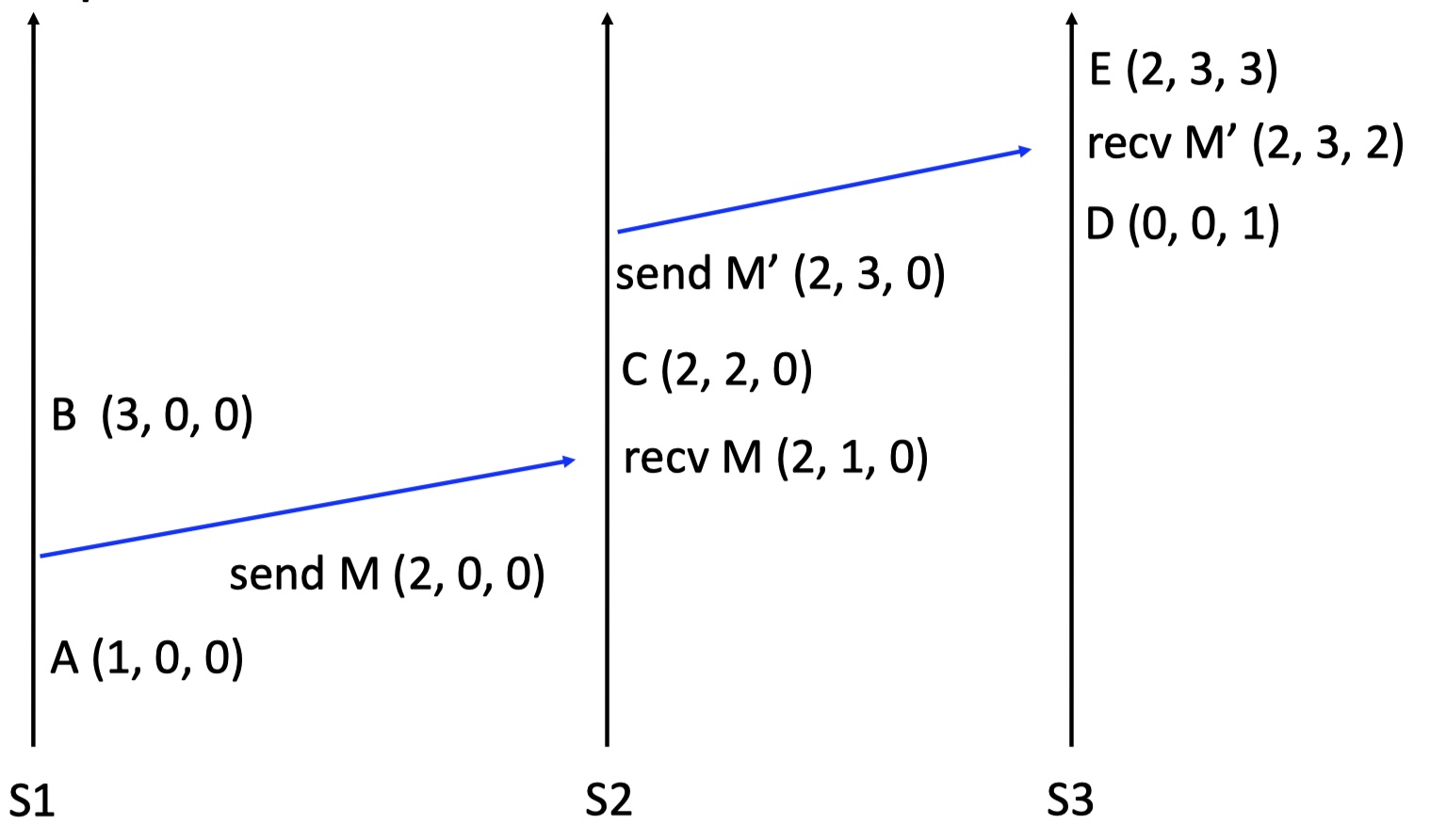Distributed System: Ordering of events
Table of Contents
上个学期的 CS5223 Distributed Systems ,Prof. Li 讲的蛮好,尽管实现了 Basic Paxos 和 Multi Paxos(多亏了 Junhui 的 cheatsheet1),但是耐不住时间的拷打,写的 Paxos 都快忘光了…
所以,赶紧开一篇博客把想法都记录下来,以便之后的复习。
首先简单过一下这些基础概念
#
Happens-before relationship
Within a process, A comes before B then A→B, it also means
B could have been influenced by A
If a → b, then b !→ a
What about a!→b, does that mean b→a? NO
If a → b, and b → c, then a → c (transitivity)
a !→ b and b !→ a, means a and b are concurrent
no one can tell whether a or b happened first!
#
Lamport clock

We can use clocks to implement a lock.
Our goals are:
- Only one process can hold the lock at a time.
- Grant the lock in request order.
- Requesting processes eventually get the lock.
Our assumptions are:
- In order point-to-point message delivery.
- No failures.
Implementation:
- Each message carries a timestamp $T_m$
- Three message types:
- request
- release
- acknowledge
- Each node’s state:
- A queue of requested messaged, ordered by $T_m$.
- The latest timestamp it received from each node.
On receiving
- receiving a request
- record the timestamp
- add the request to the queue
- send an acknowledge
- receiving a release
- record the timestamp
- remove the request from the queue
- receiving an acknowledge
- record the timestamp
To perform
- To acquire a lock
- send request to every node, including itself
- To release a lock
- send release to every node, including itself
The lock is acquired when
- My request is at the head of the queue.
- I’ve received higher timestamp from every node.
- So my request must be the earliest.
#
Vector clock
Clock is a vector C, length = # of nodes.
(0, 0, 0) for a 3-node system
On node i, increment C[i] on each event.
node 0 (3,5,2), after event: (4,5,2)
On node i, received a message, increment C[i], and take the max of each element.
node 0 (4,5,2), received message (2,7,0): (4,7,2)
If Cx[i] < Cy[i] and Cx[j] > Cy[j] for some i, j
- Cx and Cy are concurrent
if Cx[i] <= Cy[i] for all i, and there exist j such that Cx[j] < Cy[j]
- Cx happens before Cy

#
Lab 1
实现一个 at-most-once 的 KV Store
- RPC 要么最多执行一次,要么不执行
#
Reference
https://jzhu.xyz/posts/paxos (Cheatsheet of MultiPaxos Impl) ↩︎